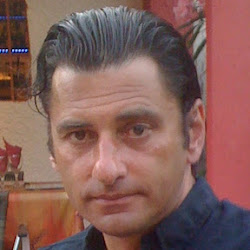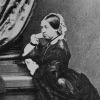New Amsterdam Genealogy Project – Part 2
Do you have New Amsterdam ancestors? You may want to check out the New Amsterdam project on Geni! Curator George Homs kindly agreed to share with his some insights about the New Amsterdam project and how it can help you in your family history research. Read part 2 of our interview below! You can find part 1 here.
What are your next steps in the New Amsterdam genealogy project?
This is a never-ending project. As said before, the churches are crucial as information sources. Hence, we want to focus more on the religious picture of New Amsterdam. We try to identify where the congregations were. We need project collaborators to focus on a specific congregation, and try to identify all its records. Even if those records are in Dutch, we have Dutch Geni users that help with uncovering the information. We also would like to spend more time on the history of the settlements, and learn more from the property contracts. We need to dig into the records of the Dutch West India Company and learn more from the ‘patroonships’, which were well defined administrative entities in those days (i.e. Rensselaerswyck – currently Albany, established by Kiliaen van Rensselaer). Many of these records are in Amsterdam. Let’s keep in mind that, for the Dutch, the settlement of New Netherland was first of all a commercial activity – and most immigrants came to the New Worldon a work contract (again… records).
Do you think you can ever map ALL original New Amsterdam immigrants?
I guess not – but we’ll get as close as we can. We can only work by official, reliable records – and they are not always complete. For instance, on the passenger lists, many immigrants that came from Dutch ports were only recorded with a patronymic, or the mention of a place of origin at best, very often without a real surname. The records of the Dutch Reformed Church are excellent – and many organizations like the Holland Society of New York or the Society of Daughters of Holland Dames have always done great work in providing translated records. The oldest Jewish congregation, Shearith Israel, created at the instigation of the ‘battling butcher of New Amsterdam’, Asser Levy, dates from 1655 – so that offers a lot of good information, too. The most frustrating part is the story of African immigrants (we prefer to call them like that, because they were not slaves like the Africans in the English colonies – even if their ‘immigration’ was forced). We estimate that there must have been about 500 African immigrants in New Amsterdam, and they married and held property. However, their origins are difficult to trace, because they were essentially captured from slave-traders in the Caribbean, en route for the Spanish and English colonies. Most often, these immigrants are only known by the country of origin like Paulo Angola. There is so much to tell and do about the early African settlers.
What have you learned from the New Amsterdam project?
I’m still learning! I’m Dutch, living in France, and I have no visibility on any close relatives that moved to New Amsterdamin the 17th century. However, by working on building connections between New Amsterdam and European origins, I now have loads of distant relatives through common ancestors in the 16th century. That’s a very interesting experience. But, the whole project is truly educative. You get a better understanding (and respect) for the hardships that all those brave migrants went through. From a European perspective, it gives you some clues about the origins of American resilience and creativity. I think that, the other way around, it is very educative for Americans too, as they learn a lot about tiny little villages and regions in Europe about which they knew nothing before. Europeans can tell them what the original industries are, the wars that were fought in specific regions – and that gives clues about why people left for theNew World.
Do you have some funny anecdotes?
There are tons! For instance, we have identified Grietje Reyniers, New York’s first hooker, which is a long history by itself (and it even explains where the word hooker comes from). We have the first child officially born on Manhattan, Jan Vigne. There is the story of a Dutch nobleman, Jan Otten van Tuyl, who killed a man in a tavern brawl, and the fled to New Amsterdam; he died there in total misery. You learn about how a New Amsterdam immigrant, Adriaen Janse van Ilpendam, committed the first recorded suicide on the island. Too many stories to talk about – and to learn from.
Have you been to New York, recently ?
No, it has been quite a few years. And, frankly, knowing what I know now, I will never again look at the city in the same way!
View the New Amsterdam – Immigrants Project









 Genealogy Discussions
Genealogy Discussions Genealogy Projects
Genealogy Projects Popular Genealogy Profiles
Popular Genealogy Profiles Surnames
Surnames The Geni Blog
The Geni Blog The World Family Tree
The World Family Tree